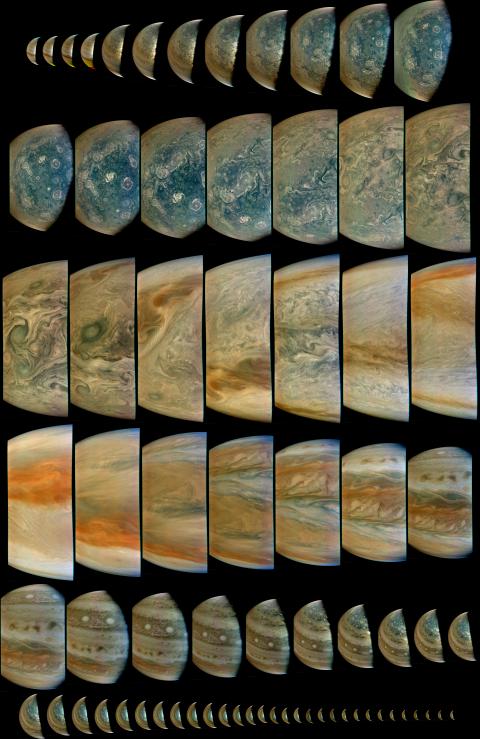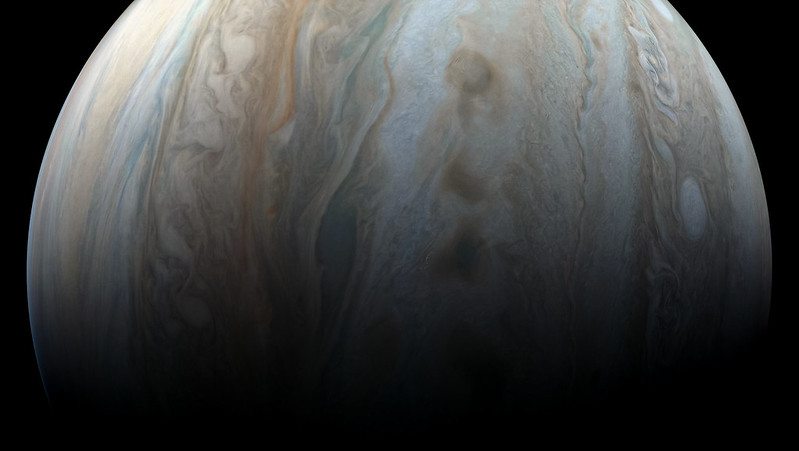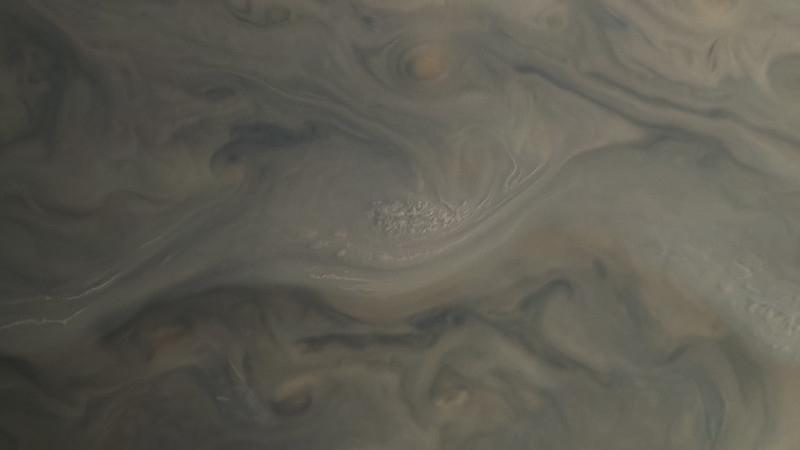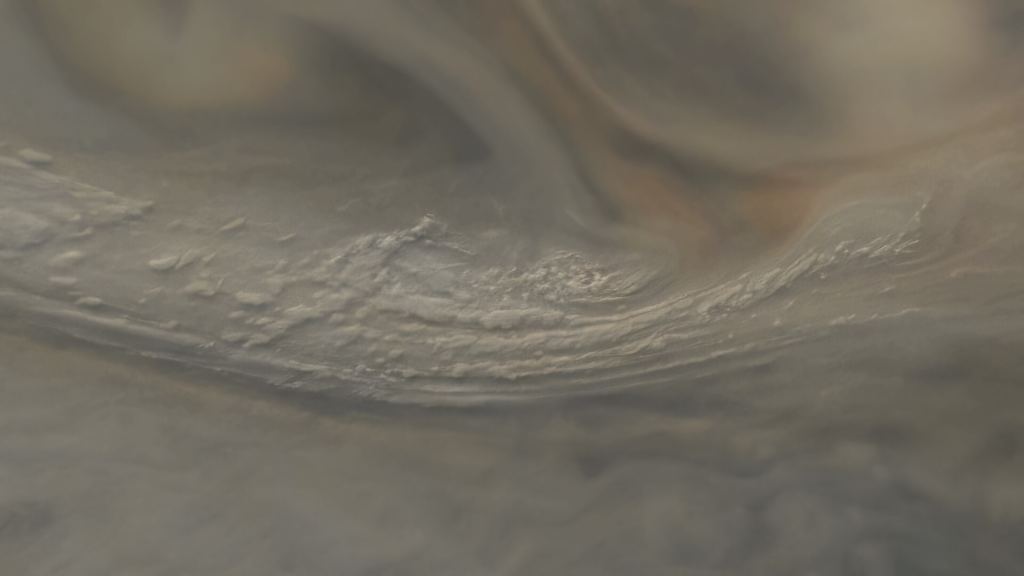On May 23, 2022, the Juno spacecraft made another close pass of Jupiter, with its suite of scientific instruments collecting data and its JunoCam visible light camera snapping photos all the while. This close pass, called a perijove, is the 42nd time the spacecraft has swung past Jupiter since Juno’s arrival in 2016.
As soon as the data from Perijove 42 was sent back to Earth, citizen scientist image editing experts around the world got to work. Kevin Gill decided to process the whole batch into one grandiose mosaic.
Image editor Brian Swift took another approach to creating a mosaic of Perijove 42:

More from Perijove 42, includes an image of Jupiter, Io and Europa in one shot, processed by Andrea Luck (the moons are towards the top right):
Here are some of the single images that Kevin Gill processed:



Juno arrived at Jupiter in July of 2016, and originally, the projected end of the mission was February of 2018, because of how close the spacecraft was going to be to Jupiter and its radiation-laden environment. The harsh “working conditions” were expected to eventually make the spacecraft inoperable. But the mission plan was changed when problems arose with the spacecraft’s main engine shortly after Juno’s arrival. Instead of the close-in 14-day orbit originally planned, the orbit was changed to 53-days, slowing down the pace of science observation and the radiation exposure. Both have made the mission last longer, which is great.
While Juno has so far focused most of its attention on the giant planet, a couple of mission extensions has added observations of Jupiter’s rings and large moons, with targeted observations and close flybys planned of the moons Ganymede, Europa, and Io, the first close flybys of these moons since the Galileo mission in 1995-2003.
Of particular interest is a close flyby of Europa at orbit 45 in currently scheduled for September 29, 2022. However, the change in orbit in order to fly past the moons will slowly decrease Juno’s orbital period. The September Europa flyby will reduce the orbit to about 38 days, and the orbit will be reduced further by two close flybys of Io at orbit 57 and 58 in early 2024 to about 33 days. Those flybys will also decrease the perijove time from about 9 hours to about 2 hours. As the orbit slowly decreases, it means the mission will come to a close. The current plan is for the mission to last until September of 2025, through Perijove 76.
JunoCam wasn’t originally in the science instrument list, but scientists realized sending a spacecraft to stunning Jupiter without a camera would be an oversight. JunoCam was added, focusing on science participation from the public.
Our thanks go to all the incredible citizen science image editing gurus out there working on the JunoCam images, including the ones featured here by Kevin Gill, Brian Swift and Andrea Luck. Make sure you check out their Twitter feeds (and their Flickr pages linked in their tweets). Plus you can see all the images that have been taken and processed from people around the world at the JunoCam website.

